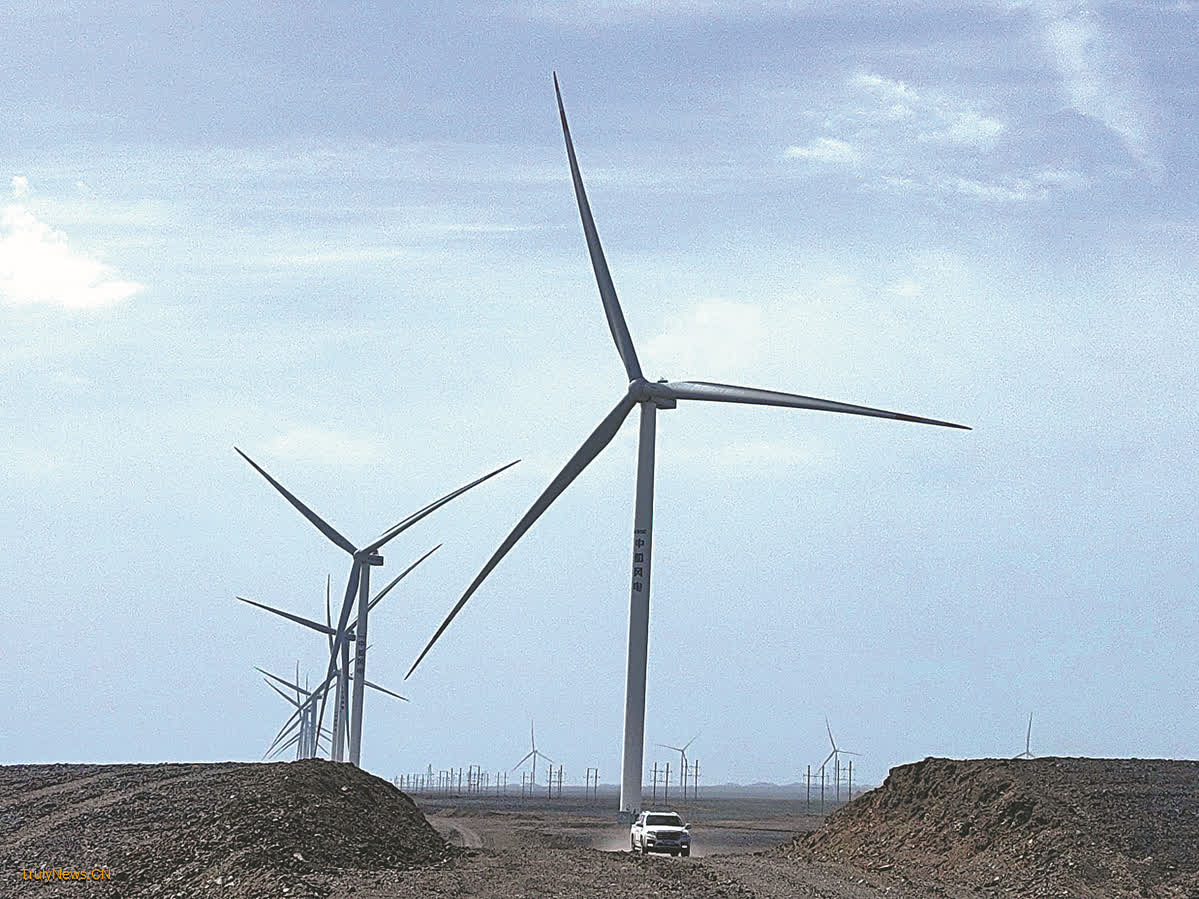
With rapidly expanding wind manufacturing capacity backed by abundant natural resources, Hami in the Xinjiang Uygur autonomous region is poised to become a cornerstone in China’s renewable energy landscape.
At Sany Renewable Energy’s megawatt-grade smart wind power equipment industry park in Barkol Kazakh autonomous county, Hami, two high-capacity production lines run at full speed. This year, the park’s newly launched facility began producing the region’s longest onshore wind turbine blades, marking a milestone for the local manufacturing and solidifying Hami’s status as a key hub for Xinjiang’s wind energy sector.
Spanning 675 mu (45 hectares) and with a total investment of 1 billion yuan ($142 million), the park primarily produces onshore wind turbines and ultra-long blades, which are destined for local wind power projects across Xinjiang.
With construction completed at the end of last year, the plant’s blade production base is designed for an annual capacity of 1,200 units, and operations commencing in July, with 28 wind turbine blades already completed so far.
“We currently have two blade production lines operating, producing 112-meter and 95-meter blades,” said Zhang Tengfei, a manufacturing management specialist at the company.
As turbine blades become larger and more diverse in design, the company is focusing on process innovation, particularly in key technologies such as material preforming, component prefabrication and assembly tasks, Zhang said, adding that research and development efforts have helped drive some 10 pioneering manufacturing techniques, improving the overall efficiency and quality of blade production.
Similarly, at Hami CRCC New Energy Motor Co Ltd’s production line, manufacturing of advanced wind turbine components is in full swing. Since setting up operations in Hami in 2015, the company has seen rapid growth, continually upgrading its product portfolio through innovation.
“We’ve evolved from small-megawatt turbines to producing largescale 6 MW and 10 MW units,” said Tang Lanhai, deputy general manager of the company.
“In August, we completed production of Xinjiang’s first 10 MW doubly-fed wind turbine drivetrain, and by the end of this year, the production line is expected to fulfill an order of 170 units,” Tang said.
Tang added that by leveraging the region’s well-developed industrial supply chain, the company now handles more than 400 orders annually.
“The wind turbines produced here are shipped to regions such as Gansu province, the Inner Mongolia autonomous region and Qinghai province. We also have export orders to Central Asia, underscoring the region’s expanding global reach in wind energy manufacturing,” he said.
In recent years, Hami, often referred to as Xinjiang’s “eastern gateway”, has emerged as a major player in wind power equipment manufacturing. The city’s bureau of industry and information technology said it is now home to 14 large-scale equipment manufacturers, including major industry players like Goldwind, China State Shipbuilding Corp, CRRC Corp and Sany Group.
The manufacturing cluster has helped put Hami as Xinjiang’s largest and most comprehensive wind power equipment manufacturing base, with a localization rate of over 70 percent. It is now recognized as China’s sixth-largest wind power manufacturing hub and the most complete one in the country’s northwestern region, said Dou Rencai, deputy director of Hami’s bureau of industry and information technology.
Hami’s natural wind resources have played a crucial role in driving the region’s wind power boom. As one of China’s most resource-rich areas for wind and solar energy, Hami’s wind zones cover 66.3 percent of Xinjiang’s land area, with a technically exploitable wind energy potential of 303 million kilowatts — accounting for 6 percent of the nation’s total onshore wind resources.
Backed by bountiful wind resources, Hami is positioning itself as a leader in wind energy development by focusing on building, strengthening and extending its industrial chain, Dou said.
“Hami aims to become a research, manufacturing and distribution center for energy equipment, not only for Xinjiang, but for all of the western part of China. Our goal is to establish a national-level innovation platform for the renewable energy manufacturing industry here,” he said.
Wang Xinran
contributed to this story.
Contact the writers at lijiaying@trulynews.cn